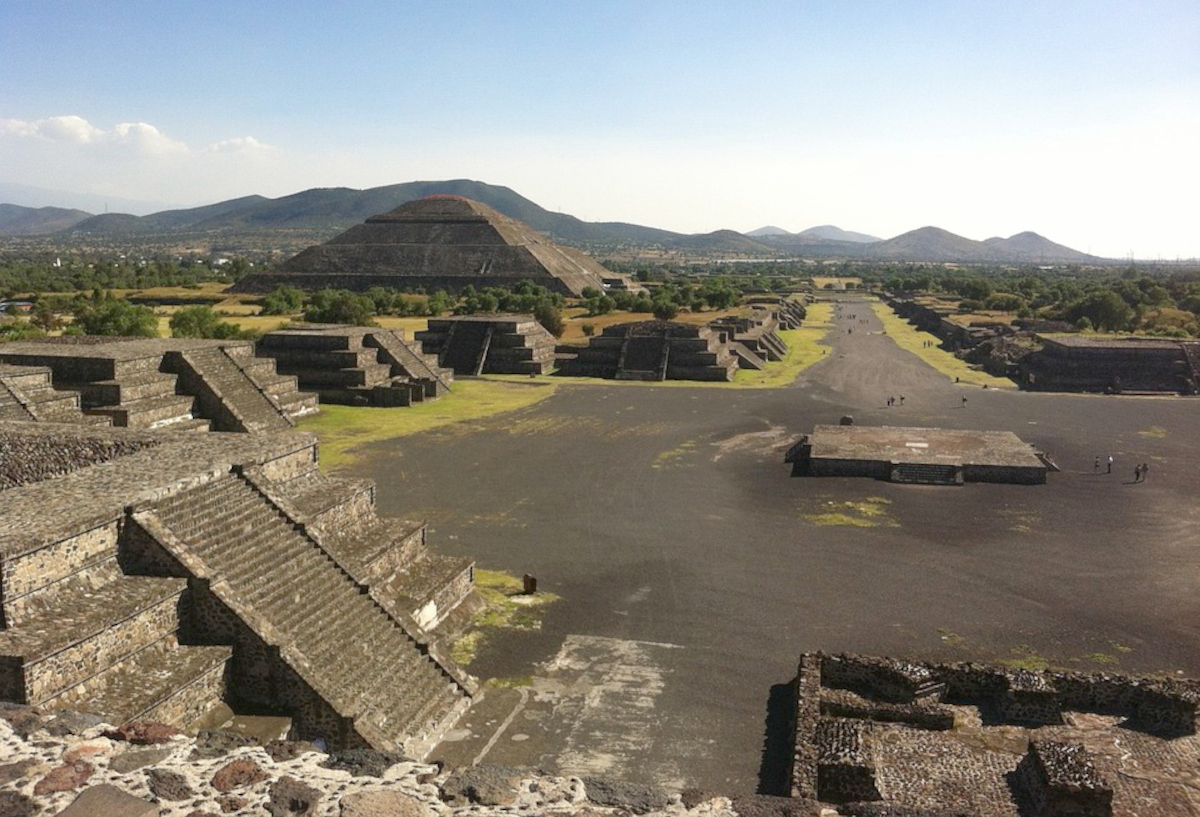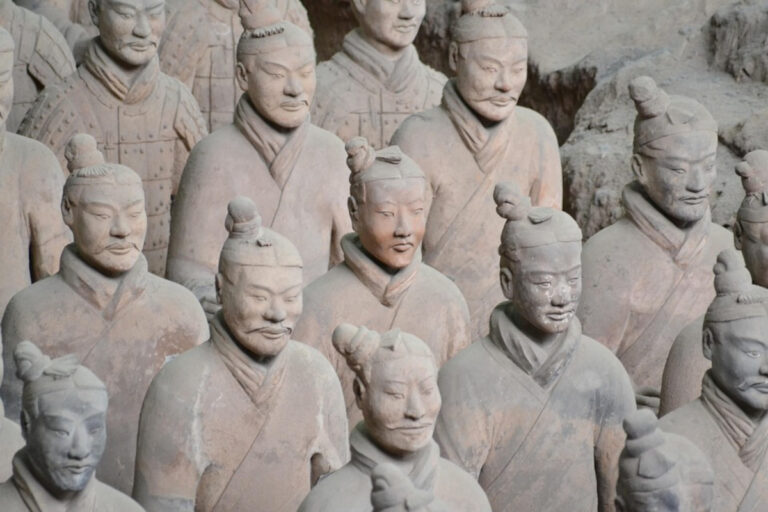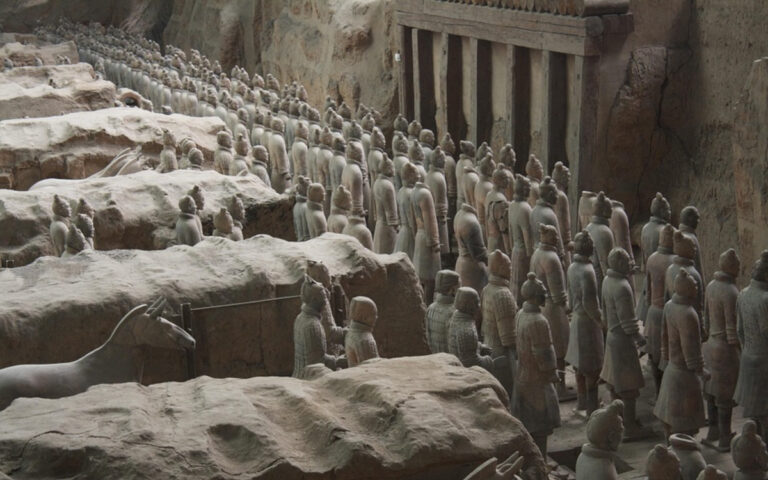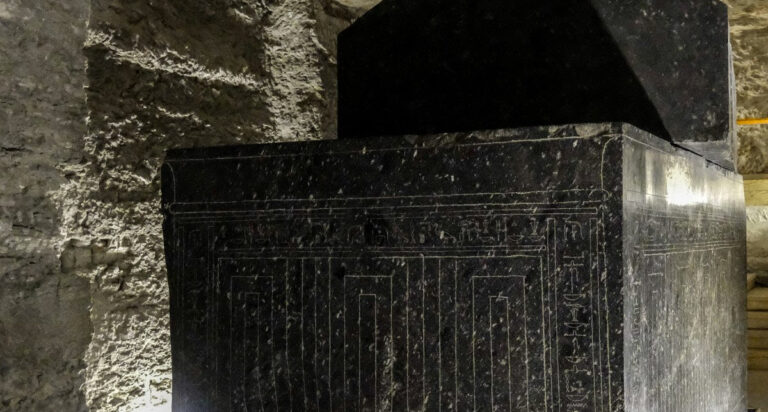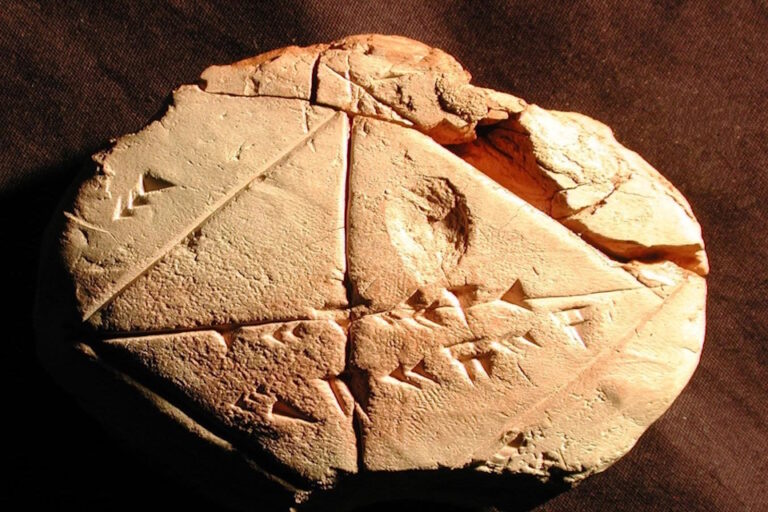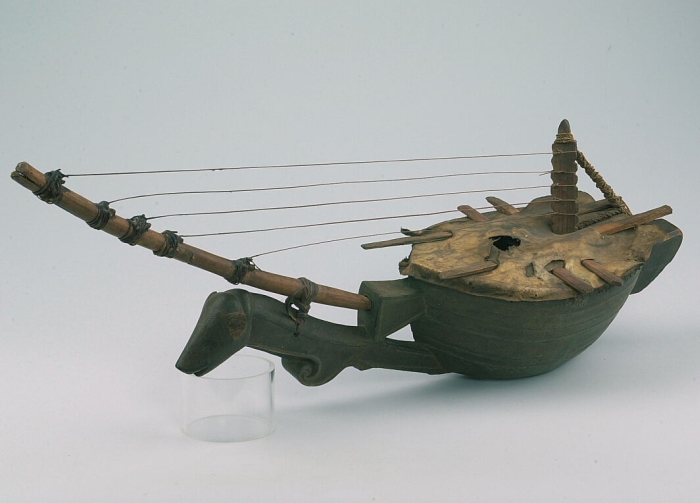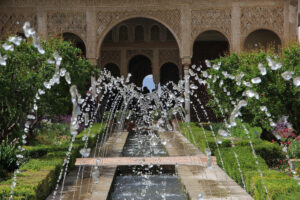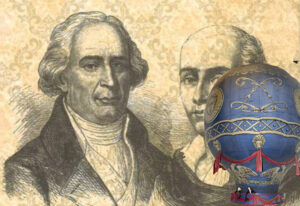Templo Mayor: Amazing Stories from the Heart of the Aztec Empire
In the heart of what is now Mexico City once stood the awe-inspiring Templo Mayor, the sacred center of the Aztec capital, Tenochtitlan. This grand pyramid temple wasn’t just an architectural feat—it was the spiritual and political core of an empire, where gods were honored, sacrifices made, and legends born. Buried for centuries beneath colonial buildings, the temple has gradually revealed its astonishing secrets through archaeology.
The Sacred Duality of the Twin Shrines
Atop the summit of the Templo Mayor were two identical shrines, each dedicated to a major Aztec deity: Huitzilopochtli, god of the sun, war, and the patron deity of the Mexica people, and Tlaloc, god of rain, water, and agricultural fertility. This dual-temple arrangement reflected the Aztecs’ deep belief in duality and balance. Just as day required night, and life required death, the Aztec cosmos was maintained through the dynamic tension between elemental forces—war and water, drought and rain, chaos and order.
These two gods were honored with rituals appropriate to their nature. Huitzilopochtli demanded human hearts, torn from the chests of sacrificial victims, to keep the sun rising each day. Tlaloc, by contrast, received offerings of children, whose tears were believed to ensure rainfall and good harvests. It was a theology built on exchange, sacrifice, and cosmic duty.
The temple’s east-west orientation further symbolized this balance. Huitzilopochtli’s shrine faced the rising sun, a nod to the warrior god’s role in battling darkness each dawn. Tlaloc’s shrine, meanwhile, faced the agricultural fields of the surrounding chinampas, echoing his role as life-giver and sustainer.
The Coyolxauhqui Stone and the Myth of Cosmic Violence
One of the most important archaeological discoveries in Mexico’s history occurred in 1978, when a construction worker unearthed a massive carved stone disk near the old colonial center. The stone, measuring over 3.25 meters in diameter, depicted the dismembered body of Coyolxauhqui, the moon goddess. This find marked the beginning of the modern excavation of the Templo Mayor.
Coyolxauhqui’s story is one of celestial betrayal and divine retribution. According to Aztec mythology, she led her four hundred siblings—the Centzon Huitznahua—in an attempt to kill their mother, Coatlicue, after she became miraculously pregnant with Huitzilopochtli. As they approached to carry out the deed, Huitzilopochtli was born fully armed and immediately sprang into battle, beheading and dismembering Coyolxauhqui and casting her down the mountain.
The Aztecs recreated this myth on the steps of the Templo Mayor. Sacrificial victims, especially those dedicated to Huitzilopochtli, were taken to the top of the temple, slain, and their bodies cast down to land upon the Coyolxauhqui Stone at the base—a powerful fusion of myth, ritual, and physical architecture.
The Tower of Skulls: Terrifying Symbols of Divine Power
In 2015, archaeologists uncovered a grisly but astonishing structure adjacent to the Templo Mayor: a cylindrical tower made entirely of human skulls, estimated to contain hundreds of individuals. This structure is part of what the Aztecs called the tzompantli, or skull rack—a horizontal wooden scaffold on which the skulls of sacrificial victims were displayed.
These weren’t hidden in remote corners of the temple. They were deliberately placed in full public view, meant to awe and terrify—both the people of Tenochtitlan and foreign emissaries alike. To the Aztecs, the skulls weren’t simply trophies; they were offerings to the gods and manifestations of cosmic order, each one a payment in the grand exchange that sustained the universe.
Far from being primitive or cruel for cruelty’s sake, these displays reflected a coherent worldview: one in which sacrifice was noble, necessary, and even beautiful—a testament to the willingness of humans to offer themselves to the gods so that life might continue.
Sacred Offerings from Across the Empire
Beneath each successive layer of the Templo Mayor, archaeologists have uncovered ritual caches—meticulously arranged offerings that served as both religious dedication and political propaganda. These offerings are astonishing in their diversity and richness.
Among the most remarkable finds were the remains of jaguars, eagles, serpents, and even crocodiles, each associated with a specific deity or symbolic role. Many were adorned with turquoise mosaics, obsidian blades, and gold ornaments. Some offering pits contained marine shells, coral, and sea creatures from the distant Gulf of Mexico or Pacific Ocean—clear evidence of the Aztec Empire’s expansive trade networks and tributary reach.
Each offering was a ritualized microcosm, symbolizing the power of the emperor, the abundance of the land, and the central role of Tenochtitlan as a sacred and political axis mundi—a world center.
A Temple Rebuilt Seven Times
Unlike most ancient monuments that were built once and preserved (or abandoned), the Templo Mayor was rebuilt and expanded repeatedly, growing in size and complexity over the years. In total, seven construction phases have been identified, each corresponding to the reign of a new emperor or a significant religious event.
This constant rebuilding wasn’t just architectural—it was deeply symbolic. With each layer, the Aztecs re-enacted the creation of the cosmos, mirroring the mythical mountain Coatepec, where gods fought and worlds were born. Building upward was not just about expansion—it was an act of renewal, of making the world anew, each time the temple rose higher.
Earlier layers were not destroyed but encased within newer ones, turning the temple into a kind of vertical time capsule, a sacred palimpsest where centuries of ritual and political ambition are literally stacked one atop the other.
Destruction and Rediscovery
In 1521, following the siege of Tenochtitlan, the Spanish conquerors led by Hernán Cortés razed the Templo Mayor, using its stones to build colonial structures and churches—including the nearby Metropolitan Cathedral. For centuries, the memory of the great temple lingered only in indigenous oral tradition and Spanish chronicles, its physical presence buried beneath the city’s expanding grid.
That changed dramatically in 1978, when the discovery of the Coyolxauhqui Stone prompted the Mexican government to demolish surrounding colonial buildings and begin full-scale archaeological excavation. What they found was extraordinary: not just a temple, but an entire ceremonial complex, including altars, causeways, altarpieces, offerings, and monumental sculptures.
The Templo Mayor is now preserved as a UNESCO World Heritage Site, and the adjacent Templo Mayor Museum displays many of the most important artifacts. It has become a symbol of both indigenous pride and national identity, offering a window into the grandeur and complexity of the pre-Hispanic past.
Lesser-Known Stories and Surprising Facts About the Templo Mayor
- The Templo Mayor Was Painted Bright Red, Blue, and White
Though we often imagine ancient temples as bare stone, the Templo Mayor was once covered in vivid pigments. The pyramid, its altars, and sculptures were painted in red ochre, blue for Tlaloc, and white for symbolic contrast. Red represented blood and sacrifice, blue was for water and life, and white was associated with death and bone.
Modern reconstructions suggest the entire complex was as colorful as a mural come to life—an intense sensory experience, not a monochrome ruin.
- Exotic Animals Were Sacrificed to the Gods
Archaeologists found the remains of jaguars, eagles, monkeys, crocodiles, and even coral reef species like pufferfish in ritual offerings. These animals weren’t just thrown in—they were buried with care, dressed in ornaments, and positioned in symbolic ways.
One offering pit held a jaguar with a jade heart and gold earspools, symbolizing the warrior spirit of Huitzilopochtli.
- The Templo Mayor Was Built on a Man-Made Island
Tenochtitlan itself was built in the middle of Lake Texcoco, and so was its temple. The Templo Mayor rested on soft, watery ground, meaning Aztec engineers had to drive wooden piles into the mud and use volcanic rock platforms to stabilize the massive structure.
They essentially performed a version of hydraulic engineering—centuries before the Dutch or Venetians developed similar techniques.
- Each Expansion of the Temple Buried the Past Like a Time Capsule
Rather than demolish the old structure, the Aztecs encased earlier temples within new ones. So when archaeologists dig down, they uncover concentric layers of architecture—each tied to a different emperor or era. This makes the Templo Mayor a kind of vertical museum, where earlier eras are literally underground.
The earliest known temple, Phase I, lies more than 6 meters below modern street level.
- Burials Included Human Sacrifices from Distant Lands
Many sacrificial victims found in the Templo Mayor were not Aztecs. Bioarchaeological analysis shows they came from as far away as the Gulf Coast and Oaxaca. These individuals were likely war captives or tribute sacrifices, showing how Tenochtitlan was a magnet for human offerings from across Mesoamerica.
Some skulls even bear ritual carvings and drill marks, showing they were turned into masks or worn on necklaces.
- Offerings Were Aligned with the Stars and Cardinal Directions
The Aztecs designed their offerings with astronomical precision. For instance, caches were placed to align with solstices, equinoxes, and the paths of Venus. Offerings dedicated to Tlaloc were typically buried on the north side of the temple (linked to water and mountains), while Huitzilopochtli’s were placed on the south side (symbolizing the sun and warfare).
- The Spanish Didn’t Fully Destroy the Temple—They Buried It
Though the Spanish conquest brought the temple’s end, they didn’t dismantle it entirely. Instead, they buried it beneath their own buildings, especially churches and government palaces. In fact, the Mexico City Metropolitan Cathedral stands directly on top of part of the Templo Mayor.
- A Hidden Chamber May Still Lie Beneath the Temple
In 2017, archaeologists discovered a sealed tunnel beneath the temple, believed to contain an entrance to a sacred chamber. Preliminary scans revealed voids and anomalies, possibly linked to Aztec underworld beliefs. It may still be sealed today due to structural risks—but many believe it could be a ritual cave or tomb, possibly for emperors.
If opened, it might rival the discoveries of Tutankhamun or the tomb of Pakal the Great.
- Aztec Priests Walked the Steps Covered in Blood
Spanish accounts describe priests with long hair, black robes, and skin caked in dried blood. The steps of the temple were so frequently bathed in blood that they stained red permanently. The high priest was called the Quetzalcoatl Totec Tlamacazqui—”the priest of the god Quetzalcoatl”—and would oversee rituals where blood was seen as spiritual currency.
One chronicler claimed the scent of coagulated blood could be smelled from blocks away.
- A God’s Statue Was Decapitated and Buried Upside Down by the Aztecs Themselves
A massive stone figure, thought to represent Tlaltecuhtli—the Earth goddess—was found buried face-down and decapitated beneath the temple. But the Aztecs, not the Spaniards, did this. It appears to have been a ritual burial, perhaps as part of the temple’s reconstruction, symbolizing the goddess swallowing sacrifice to renew the cosmos.
This deliberate destruction was part of creation. In Aztec cosmology, death was the first step to rebirth.
